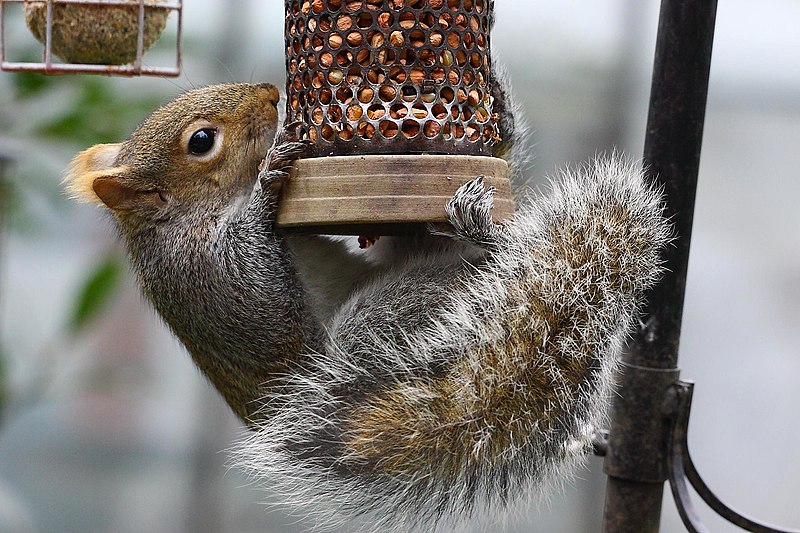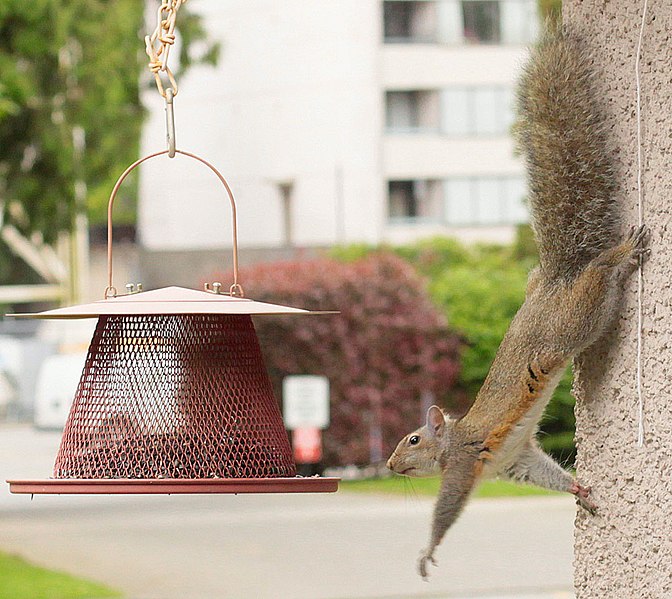The most effective way to get rid of squirrels is to seal off entry points and use strong deterrents like peppermint oil, motion-activated lights, or ultrasonic repellents. For persistent problems, it’s best to contact a professional squirrel removal service like AAAC Wildlife Removal of Dallas to safely and legally handle the situation.
Whether they’re nesting in your attic or scurrying around your garden, getting rid of squirrels requires a well-thought-out plan. These animals may look harmless, but they can cause serious damage—chewing through electrical wires, damaging insulation, and tearing up gardens in search of food. Left unchecked, a single squirrel can quickly turn into a full-blown infestation. That’s why it’s important to act quickly and strategically.
Effective squirrel removal goes beyond setting traps or using repellents. It’s about identifying how they’re getting in, understanding what’s attracting them, and sealing up any potential entry points to prevent future problems. In this article, we’ll break down a practical, step-by-step approach that covers everything from initial inspection to long-term prevention. Whether you’re dealing with one curious visitor or a family of squatters, this guide will help you handle the situation in a safe, humane, and efficient way.
Step-by-Step Guide to Squirrel Removal
Inspect for Squirrel Activity
The first step in squirrel removal is identifying where the squirrels are active. Look for signs such as chewed wires, droppings, and nesting materials like leaves or insulation. If they’ve entered your attic or walls, you may hear scratching or scampering sounds during the early morning or late afternoon. An inspection is crucial in determining the severity of the infestation and pinpointing their entry points.
Once you’ve identified the presence of squirrels, you’ll need to determine whether they’re nesting or just passing through. Squirrels that have established nests can be more difficult to remove, as they’re likely protecting their young. At this stage, it’s important to document where they’re entering your home, as sealing off these entry points will be key to preventing future infestations.
Identify and Seal Entry Points
After inspecting your home, the next step is to identify and seal all potential entry points that squirrels are using to gain access. These can include gaps in roofing, vents, chimneys, or even cracks in your home’s exterior. Squirrels can squeeze through very small openings, so it’s important to seal even the smallest gaps with materials such as wire mesh, steel wool, or caulk.
Sealing entry points should be done carefully to avoid trapping squirrels inside, which could lead to further damage as they try to escape. In some cases, you may need to install a one-way door that allows the squirrels to exit but prevents them from re-entering. This is especially useful if you suspect there are still squirrels inside your home when sealing the exits.
Set Humane Traps
Once the entry points are sealed, setting humane traps is the next step. These traps are designed to capture squirrels without harming them, allowing for safe removal. Place the traps near the entry points or along areas where you’ve noticed squirrel activity. Bait the traps with food that squirrels are attracted to, such as peanut butter or nuts, to increase the chances of a successful capture.
It’s important to regularly check the traps to avoid leaving captured squirrels in them for extended periods. Humane traps allow you to relocate the squirrels safely, but you should be aware of local wildlife laws before releasing them far from your property. In some areas, wildlife services may require specific guidelines for trapping and releasing animals like squirrels.
Proper Disposal or Removal
After successfully capturing the squirrels, you need to consider the best course of action for disposal or removal. In areas where removal is regulated, ensure you’re following local laws and guidelines to avoid penalties. Some experts recommend transporting squirrels at least five to ten miles away to a safe, wooded location where they can survive without returning to your property.
If removal isn’t allowed or feasible in your region, consult with local wildlife control services for proper disposal methods. It’s crucial to handle squirrels carefully, as they can carry diseases and pose health risks if not managed appropriately. Once the squirrels are removed, you can proceed with the final steps to ensure they don’t return.
Clean and Repair Any Damage
Squirrels can cause significant damage to insulation, wiring, and structural elements of your home, so cleaning up after their removal is essential. Start by disinfecting any areas where squirrels were nesting to eliminate bacteria and odors. Remove any nesting materials and check for droppings, which can attract other pests if left untreated.
Next, inspect for damage, particularly in areas like the attic, walls, or roof. Squirrels are known to chew on electrical wiring, which can pose a fire hazard, so it’s crucial to repair these issues promptly. Depending on the extent of the damage, you may need to replace insulation, repair drywall, or even hire professionals to restore your home to its original condition.
Professional Help vs. DIY
DIY Squirrel Removal
For homeowners who prefer a hands-on approach, DIY squirrel removal can be a tempting option. It typically involves purchasing traps or repellents from local stores and attempting to seal entry points on your own. DIY methods can cost significantly less upfront, usually ranging from $50 to $150 for basic supplies. This route is best suited for minor infestations, where the squirrels haven’t yet caused significant damage or established deep nests inside your home.
However, DIY removal comes with certain risks. If the problem isn’t fully addressed, squirrels can return, leading to recurring infestations that may ultimately cost more in repairs and professional services. Additionally, handling wild animals without proper knowledge can pose health risks, as squirrels may carry diseases or parasites. For these reasons, many homeowners find it challenging to achieve long-term success with DIY methods.
Professional Squirrel Removal Services
Hiring professional squirrel removal services offers a more comprehensive and reliable solution. These experts are trained to safely and humanely handle wildlife, using proven methods such as trapping, exclusion, and preventive measures. The cost of professional removal ranges from $300 to $600 depending on the size of the infestation and the specific services provided. While this may seem expensive, the long-term benefits of professional services often outweigh the initial costs.
Professionals not only remove the squirrels but also provide essential follow-up services, such as repairing entry points and offering advice on how to prevent future infestations. They can also address damage caused by the squirrels, such as chewed wiring or damaged insulation, ensuring your home is fully restored. Additionally, many wildlife control companies offer guarantees, giving homeowners peace of mind that the squirrels won’t return after removal.
Conclusion
Dealing with squirrels in your home can be a challenging and time-consuming task. While DIY methods may seem like a cost-effective solution, they often don’t provide the long-term success that professional services can guarantee. Proper squirrel removal requires a combination of thorough inspection, humane trapping, and preventive measures to ensure the problem doesn’t return. Whether you choose to handle it yourself or hire professionals, addressing the issue early can save you from costly repairs down the road.
For homeowners looking for a reliable and efficient solution, professional wildlife control services like AAAC Wildlife Removal Dallas offer comprehensive support. Our team of experts specializes in humane squirrel removal, from the initial inspection to sealing entry points and repairing any damage. With years of experience handling squirrel infestations, we ensure that your home is protected from future problems while adhering to local wildlife regulations.
At AAAC Wildlife Removal Dallas, we understand the importance of resolving squirrel issues quickly and effectively. Our services not only remove the immediate problem but also provide long-term protection, giving you peace of mind that your home is safe from future infestations. Contact us today for a thorough inspection and to learn more about how we can help with all your wildlife removal needs.
More about squirrels:
Is It legal To Relocate Squirrels In Texas?
How Long Do Coffee Grounds Keep Squirrels Away?
How Much Does It Cost To Get Rid Of Squirrels?
What Do Squirrels Hate The Most?





